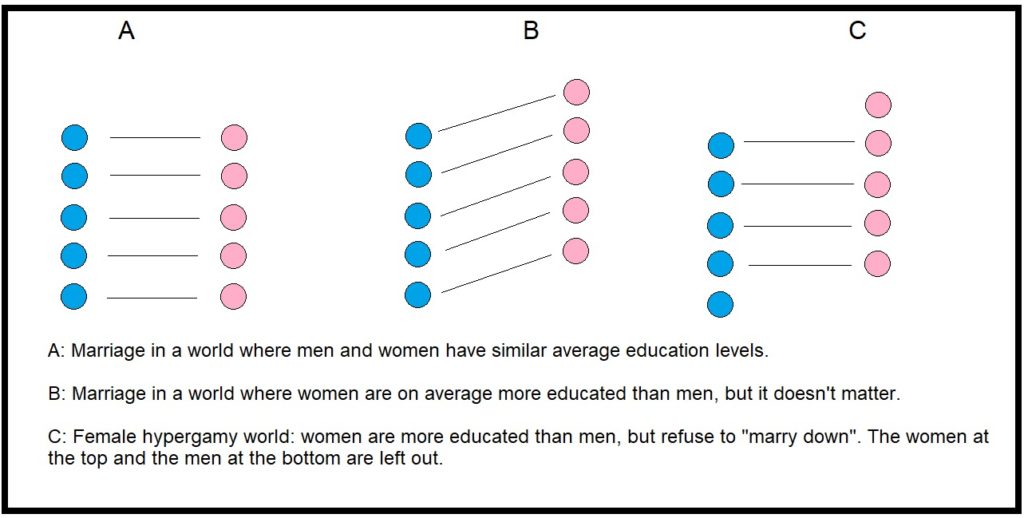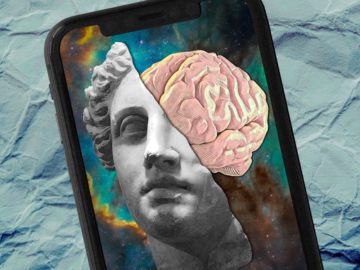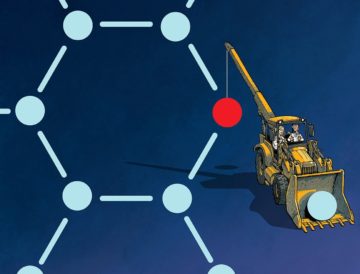Category: Archives
Oscar Levant
Dixie Burge in Big Band Swing:
 “Oscar Levant is a character who, if he did not exist, could not be imagined.” These words were used by Levant’s great friend, S. N.(“Sam”)Behrman, to describe him. No truer words were ever spoken! In his lifetime, Oscar Levant flourished as (and subsequently gave up each, one by one) gifted composer, concert pianist, radio personality, movie star, successful recording artist, best-selling author, talk-show host and quiz show panelist. Whew! It was what he described as his Noel Coward Principal he managed “to break off his jobs at a certain interval.” He appeared in thirteen movies, including “An American In Paris”, “The Band Wagon”, “Humoresque” and the George Gershwin biograpy, “Rhapsody in Blue”, in which he played “an unsympathetic part… myself.”
“Oscar Levant is a character who, if he did not exist, could not be imagined.” These words were used by Levant’s great friend, S. N.(“Sam”)Behrman, to describe him. No truer words were ever spoken! In his lifetime, Oscar Levant flourished as (and subsequently gave up each, one by one) gifted composer, concert pianist, radio personality, movie star, successful recording artist, best-selling author, talk-show host and quiz show panelist. Whew! It was what he described as his Noel Coward Principal he managed “to break off his jobs at a certain interval.” He appeared in thirteen movies, including “An American In Paris”, “The Band Wagon”, “Humoresque” and the George Gershwin biograpy, “Rhapsody in Blue”, in which he played “an unsympathetic part… myself.”
…Levant was an astonishingly gifted concert pianist who, in his heyday of the 1940’s and early-to-mid 1950’s, earned more money than any other pianist in America. In the 1930’s, before he gained his real fame, Levant was dubbed “the wag of Broadway” by Michael Mok in the New York Post. In the 1940’s, at the height of his fame as a wit and bad boy, he was known as “the enfant terrible.” In the 1950’s and ‘60’s, after mental illness and drug abuse had taken their toll, Levant was known as “America’s favorite neurotic.” He sporadically appeared on The Tonight Show with Jack Paar to talk candidly about those subjects, being the first well-known personality to do so. He coined a now-famous phrase: “There is a fine line between genius and insanity. I have erased that line.” Author Christopher Isherwood described Levant as a character created by Dostoevsky someone “completely unmasked at all times.”
…“It’s not what you are – it’s what you don’t become that hurts.” Oscar Levant
More here.
Is memory relational or absolute?
Daniel Levitin in Delancey Place:
 “The big debate among memory theorists over the last hundred years has been about whether human and animal is relational or absolute. The relational school argues that our memory system stores information about the relations between objects and ideas, but not necessarily details about the objects themselves. This is also called the constructivist view, because it implies that, lacking sensory specifics, we construct a memory representation of reality out of these relations (with many details filled in or reconstructed on the spot). The constructivists believe that the function of memory is to ignore irrelevant details, while preserving the gist. The competing theory is called the record-keeping theory. Supporters of this view argue that memory is like a tape recorder or digital video camera, preserving all or most of our experiences accurately, and with near perfect fidelity.
“The big debate among memory theorists over the last hundred years has been about whether human and animal is relational or absolute. The relational school argues that our memory system stores information about the relations between objects and ideas, but not necessarily details about the objects themselves. This is also called the constructivist view, because it implies that, lacking sensory specifics, we construct a memory representation of reality out of these relations (with many details filled in or reconstructed on the spot). The constructivists believe that the function of memory is to ignore irrelevant details, while preserving the gist. The competing theory is called the record-keeping theory. Supporters of this view argue that memory is like a tape recorder or digital video camera, preserving all or most of our experiences accurately, and with near perfect fidelity.
“Music plays a role in this debate because — as the Gestalt psychologists noted over one hundred years ago — melodies are defined by pitch relations (a constructivist view) and yet, they are composed of precise pitches (a record-keeping view, but only if those pitches are encoded in memory).
More here.
Christine and the Queens’ Restless Self-Inventions
Hanif Abdurraqib at The New Yorker:
 In 2014, Christine and the Queens’ French album début, “Chaleur Humaine” (“Human Warmth”), became a runaway hit; the following year, a self-titled version appeared in the U.S., with many of the lyrics reworked into English. The songs had infectious hooks and shimmering electronic instrumentation. Back then, Letissier used feminine pronouns, but he was already casting off the strictures of gender. The opening song of the début album, “iT,” was a danceable tune in which bright drops of synthesizer rained into caverns of pulsating bass. The lyrics were a priapic fantasy: “I’ll rule over all my dead impersonations / ’Cause I’ve got it / I’m a man now.” I saw Christine and the Queens perform in 2015, in New York, and recall how hard-earned those declarations seemed to be. Christine—petite, lithe, androgynous—seemed at ease in a dark suit, standing at the front of the stage or dancing in a wash of blue light. But there were moments when the line between Letissier’s different selves blurred. During one rapturous wave of applause, he teared up, then apologized for the lapse, admitting, “I wanted to be fierce.”
In 2014, Christine and the Queens’ French album début, “Chaleur Humaine” (“Human Warmth”), became a runaway hit; the following year, a self-titled version appeared in the U.S., with many of the lyrics reworked into English. The songs had infectious hooks and shimmering electronic instrumentation. Back then, Letissier used feminine pronouns, but he was already casting off the strictures of gender. The opening song of the début album, “iT,” was a danceable tune in which bright drops of synthesizer rained into caverns of pulsating bass. The lyrics were a priapic fantasy: “I’ll rule over all my dead impersonations / ’Cause I’ve got it / I’m a man now.” I saw Christine and the Queens perform in 2015, in New York, and recall how hard-earned those declarations seemed to be. Christine—petite, lithe, androgynous—seemed at ease in a dark suit, standing at the front of the stage or dancing in a wash of blue light. But there were moments when the line between Letissier’s different selves blurred. During one rapturous wave of applause, he teared up, then apologized for the lapse, admitting, “I wanted to be fierce.”
more here.
Christine and the Queens – Tilted
Human Extinction And AI Denial
Erik Hoel at The Intrinsic Perspective:
 While GPT-4 does have a radically different architecture from our own biological brains (like being solely feedforward and synchronous, whereas our own organic brains have a lot of feedback and asynchronous processing), AIs are neural networks inspired from biological ones. AIs have a learning rule that changes the strengths of the connections between their neurons, just like us—except their learning rule is applied from the outside by their engineers during a training phase, unlike us, who are forever learning (and forgetting). When artificial neural networks are trained, they often develop the properties we associate with real neural networks like grid-cells, shape-tuning, and visual illusions, which is why researchers in 2019 proposed a “deep learning framework for neuroscience.” There are even some prominent arguments that our own brains follow learning rules not too dissimilar. This similarity is why I advanced the Overfitted Brain Hypothesis, which argues that dreaming is a form of data augmentation, like a noise injection, that makes our nighttime experiences sparse and hallucinatory, and evolved to prevent overfitting.
While GPT-4 does have a radically different architecture from our own biological brains (like being solely feedforward and synchronous, whereas our own organic brains have a lot of feedback and asynchronous processing), AIs are neural networks inspired from biological ones. AIs have a learning rule that changes the strengths of the connections between their neurons, just like us—except their learning rule is applied from the outside by their engineers during a training phase, unlike us, who are forever learning (and forgetting). When artificial neural networks are trained, they often develop the properties we associate with real neural networks like grid-cells, shape-tuning, and visual illusions, which is why researchers in 2019 proposed a “deep learning framework for neuroscience.” There are even some prominent arguments that our own brains follow learning rules not too dissimilar. This similarity is why I advanced the Overfitted Brain Hypothesis, which argues that dreaming is a form of data augmentation, like a noise injection, that makes our nighttime experiences sparse and hallucinatory, and evolved to prevent overfitting.
more here.
Thursday Poem
Acadian Lane
Indigo against ocher, Atlantic
Blue abutting shore cliffs, bluffs, and sand,
All of the earth on Prince Edward Island
The red of dried blood, of weather-worn brick,
Of this rutted, twisting road leading down
Through the fishing village to the harbor
Where lobster boats rock, scarlet as lobster;
The bay’s depth, smoked glass, reflecting the town.
A few dogs rustle in the heat of the noon;
The gulls, the bitterns lift, circling again.
A man is walking his Acadian
Lane, the fine red dust rising off his clothes;
He begins to sing a slow French tune—
La mer, la terre, le monde est seulement ces choses!
by David St, John
from Strong Measures
Harper Collins, 1986
Wednesday, May 31, 2023
Where to start with: Kazuo Ishiguro
David Sexton in The Guardian:
 The Japanese-born British novelist Kazuo Ishiguro is one of the most critically acclaimed authors writing in English today: the now 68-year-old was twice selected in the Granta Best of Young British Novelists issue, in 1983 and 1993, before going on to bag the Booker prize, the Nobel prize in literature and a knighthood. Earlier this year, he picked up Bafta and Oscar nominations too, for his adapted screenplay of Living, starring Bill Nighy. David Sexton suggests some good places to start for those who haven’t yet dipped in to his work.
The Japanese-born British novelist Kazuo Ishiguro is one of the most critically acclaimed authors writing in English today: the now 68-year-old was twice selected in the Granta Best of Young British Novelists issue, in 1983 and 1993, before going on to bag the Booker prize, the Nobel prize in literature and a knighthood. Earlier this year, he picked up Bafta and Oscar nominations too, for his adapted screenplay of Living, starring Bill Nighy. David Sexton suggests some good places to start for those who haven’t yet dipped in to his work.
More here.
What Is The Hypergamy Hypothesis?
Scott Alexander in Astral Codex Ten:
“Female hypergamy” (from now on, just “hypergamy”) is a supposed tendency for women to seek husbands who are higher-status than themselves. Arguing about educational hypergamy (women seeking husbands who are more educated than themselves) is especially popular, because women are now (on average) more educated than men – if every woman wants a more-educated husband, most won’t get them, and there will be some kind of crisis.

Freddie de Boer’s Demographic Dating Market Doom Loop presents an argument that educational hypergamy is lowering marriage rates.
More here.
Yann LeCun, Chief AI Scientist at Meta AI: From Machine Learning to Autonomous Intelligence
Why recent attacks on the foundations of liberal thought miss the mark
Richard V Reeves in Persuasion:
 One hundred and fifty years ago this month, John Stuart Mill died in his home in Avignon. His last words were to his step-daughter, Helen Taylor: “You know that I have done my work.”
One hundred and fifty years ago this month, John Stuart Mill died in his home in Avignon. His last words were to his step-daughter, Helen Taylor: “You know that I have done my work.”
He certainly had. During his 66 years of life, Mill became the preeminent public intellectual of the century, producing definitive works of logic and political economy, founding and editing journals, serving in Parliament, and churning out book reviews, journalism and essays, most famously his 1859 masterpiece, On Liberty. Oh, and he had a day job, too: as one of the most senior bureaucrats in the East India Company.
What is too often forgotten about Mill is that he was as much an activist as an academic. Benjamin Franklin exhorted his followers to “either write something worth reading or do something worth writing.” Mill, like Franklin himself, is among the very few who managed to do both.
For Mill, liberalism did not only have to be argued for, it had to be fought for, too. He campaigned for women’s rights and was the first MP to introduce a bill for women’s suffrage into Parliament. He was a fiercely committed anti-racist, strongly supporting the abolitionist movement in the United States, and the North in the Civil War. Mill also led a successful campaign for the right to protest and speak in London’s public parks. In Hyde Park, the famous Speaker’s Corner stands today as a tribute to his victory.
More here.
The Untold Founding Of Pitcairn Island
Music to Raise the Dead
Ted Gioia at The Honest Broker:
 Perhaps the most fascinating thing here is the insistence that singing the song isn’t enough to help the supplicant who is in a crisis situation. It’s also essential to understand what the lyrics really mean. The Derveni author gets most irate when describing those who turn to other musical ritualists for enlightenment, for “they go away after having performed [the rites] before they have attained knowledge, without even asking further questions.”
Perhaps the most fascinating thing here is the insistence that singing the song isn’t enough to help the supplicant who is in a crisis situation. It’s also essential to understand what the lyrics really mean. The Derveni author gets most irate when describing those who turn to other musical ritualists for enlightenment, for “they go away after having performed [the rites] before they have attained knowledge, without even asking further questions.”
So we are left with the surprising fact that not only is the oldest book in Europe about music criticism, but that this is not a trivial detail or mere happenstance. In this time and place, knowing the meaning of a song could be a matter of grave importance (no pun intended). Or even more to the point—the effects of making a wrong choice could last into the afterlife. Was there ever a music fan who made a more extreme claim for a favorite song?
more here.
On The Italian Baroque Master, Francesco Borromini

When I saw a picture of the Church of San Carlo alle Quattro Fontane in Rome, I knew almost for certain that the brazen and sensuous façade, its concave and convex undulations, must have been designed by a restless spirit. A simple Google search confirmed my suspicion. The architect, baroque master Francesco Borromini, is thought to have suffered from a manic-depressive disorder. Combined with his obvious perfectionism, this must have been the generative force behind his large oeuvre of superhuman designs. But the creative ferment of his genius had a dark side: he went through pitch-black periods of utter dejection.
In a sense, Borromini’s entire career was dominated by that church, San Carlo, whose small footprint has given it the nickname San Carlino. Along with the adjacent monastery and sleeping quarters, it was Borromini’s first solo architectural commission—though anything but a routine job.
more here.
Can Digital Psychiatry Really Fill the Mental Health Care Gap?
Bhav Jain and Simar Bajaj in Smithsonian:
 Imagine you’re in a room with a hundred American young adults, bright-eyed and bushy-tailed. Over their lifetimes, about 25 of them will have a stroke; 40 will get cancer. And an astounding half the room will develop a mental illness, if they haven’t done so already.
Imagine you’re in a room with a hundred American young adults, bright-eyed and bushy-tailed. Over their lifetimes, about 25 of them will have a stroke; 40 will get cancer. And an astounding half the room will develop a mental illness, if they haven’t done so already.
The United States’ mental health epidemic has been simmering for decades, with Covid-19 both illuminating and exacerbating the crisis. Given the social isolation, job insecurity and weakened support systems over the past few years, the World Health Organization estimated a 25 percent increase in anxiety and depression worldwide, with women and young people worst hit. A large part of the challenge are the cavernous gaps in care: 158 million Americans live in an area with a shortage of mental health workers. And while the rise of telehealth and creation of the 988 suicide and crisis lifeline have helped, they are only Band-Aids, barely holding together a system failing at its seams. “We’re at a point in the U.S. where it almost couldn’t get worse,” says Kenneth Pages, a Florida doctor and former chief of psychiatry at Tampa General Hospital. “Describe worse to me at this point.”
More here.
‘Almost magical’: chemists can now move single atoms in and out of a molecule’s core
Mark Peplow in Nature:
 Half a decade ago, chemist Mark Levin was a postdoc looking for a visionary project that could change his field. He found inspiration in a set of published wish lists from pharmaceutical-industry scientists who were looking for ways to transform medicinal chemistry1,2. Among their dreams, one concept stood out: the ability to precisely edit a molecule by deleting, adding or swapping single atoms in its core.
Half a decade ago, chemist Mark Levin was a postdoc looking for a visionary project that could change his field. He found inspiration in a set of published wish lists from pharmaceutical-industry scientists who were looking for ways to transform medicinal chemistry1,2. Among their dreams, one concept stood out: the ability to precisely edit a molecule by deleting, adding or swapping single atoms in its core.
This sort of molecular surgery could dramatically speed up drug discovery — and might altogether revolutionize how organic chemists design molecules. One 2018 review called it a ‘moonshot’ concept. Levin was hooked.
Now head of a team at the University of Chicago in Illinois, Levin is among a cadre of chemists pioneering these techniques, aiming to more efficiently forge new drugs, polymers and biological molecules such as peptides. In the past two years, more than 100 papers on the technique — known as skeletal editing — have been published, demonstrating its potential (see ‘Skeletal editing on the rise’). “There’s a tremendous amount of buzz right now around this topic,” says Danielle Schultz, director of discovery-process chemistry at pharmaceutical company Merck in Kenilworth, New Jersey.
More here.
Tuesday, May 30, 2023
Robert Pinsky: The best books that were composed by ear
Robert Pinsky at Shepherd:
 Pictures from Brueghel and Other Poems
Pictures from Brueghel and Other Poems
By William Carlos Williams
Why this book?
Williams, late in his life, can look out the window or at the newspaper and open his mind and eye and breath to catch the truth of the thing in verse-music.
Very early in his life, he memorized a lot of poems, so as a New Jersey improviser he didn’t have to think about the sounds. He composed as an athlete runs, jumps, throws, etc. I can hear him.
More books here.
Quantum computers: what are they good for?
Michael Brooks in Nature:
 If you believe the hype, computers that exploit the strange behaviours of the atomic realm could accelerate drug discovery, crack encryption, speed up decision-making in financial transactions, improve machine learning, develop revolutionary materials and even address climate change. The surprise is that those claims are now starting to seem a lot more plausible — and perhaps even too conservative.
If you believe the hype, computers that exploit the strange behaviours of the atomic realm could accelerate drug discovery, crack encryption, speed up decision-making in financial transactions, improve machine learning, develop revolutionary materials and even address climate change. The surprise is that those claims are now starting to seem a lot more plausible — and perhaps even too conservative.
According to computational mathematician Steve Brierley, whatever the quantum sweet spot turns out to be, it could be more spectacular than anything we can imagine today — if the field is given the time it needs. “The short-term hype is a bit high,” says Brierley, who is founder and chief executive of quantum-computing firm Riverlane in Cambridge, UK. “But the long-term hype is nowhere near enough.”
More here.
How a Computer Broke a 50-Year Math Record
The AI Moment of Truth for Chinese Censorship
Stephen S. Roach in Project Syndicate:
 In his now-classic 2018 book, AI Superpowers, Kai-Fu Lee threw down the gauntlet in arguing that China poses a growing technological threat to the United States. When Lee gave a guest lecture to my “Next China” class at Yale in late 2019, my students were enthralled by his provocative case: America was about to lose its first-mover advantage in discovery (the expertise of AI’s algorithms) to China’s advantage in implementation (big-data-driven applications).
In his now-classic 2018 book, AI Superpowers, Kai-Fu Lee threw down the gauntlet in arguing that China poses a growing technological threat to the United States. When Lee gave a guest lecture to my “Next China” class at Yale in late 2019, my students were enthralled by his provocative case: America was about to lose its first-mover advantage in discovery (the expertise of AI’s algorithms) to China’s advantage in implementation (big-data-driven applications).
Alas, Lee left out a key development: the rise of large language models and generative artificial intelligence. While he did allude to a more generic form of general-purpose technology, which he traced back to the Industrial Revolution, he didn’t come close to capturing the ChatGPT frenzy that has now engulfed the AI debate. Lee’s arguments, while making vague references to “deep learning” and neural networks, hinged far more on AI’s potential to replace human-performed tasks rather than on the possibilities for an “artificial general intelligence” that is close to human thinking. This is hardly a trivial consideration when it comes to China’s future as an AI superpower.
That’s because Chinese censorship inserts a big “if” into that future.
More here.
